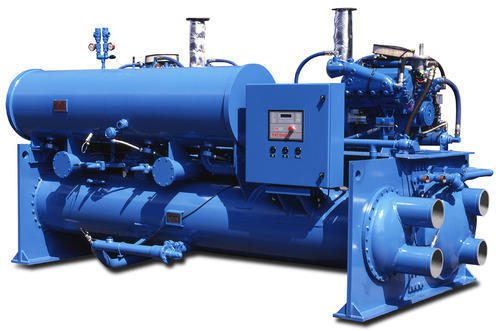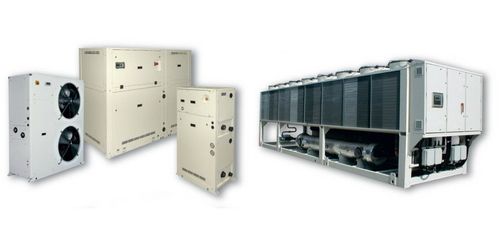Water Chiller
Product Details:
- Material Metal
- Application All industrial cooling application
- Condition New
- Power Supply 1PH/50 HZ 3 PH/50 HZ
- Cooling Type Water Cooled
- Compressor Screw Compresor
- Warranty Yes
- Click to View more
Water Chiller Price And Quantity
- 1 Unit
- 100000.00 - 250000.00 INR
Water Chiller Product Specifications
- All industrial cooling application
- New
- Water Cooled
- Screw Compresor
- Yes
- 1PH/50 HZ 3 PH/50 HZ
- Metal
Water Chiller Trade Information
- MUMBAI
- Cash on Delivery (COD) Cash in Advance (CID) Cheque Cash Advance (CA)
- 10 Unit Unit Per Week
- 3-30 Days
- Australia North America Eastern Europe Central America Africa Middle East South America Western Europe Asia
- All India
Product Description
In most process cooling applications, a pumping system circulates cool water or a water/glycol solution from the chiller to the process. This cool fluid removes heat from the process and the warm fluid returns to the chiller. The process water is the means by which heat transfers from the process to the chiller.
Process chillers contain a chemical compound, called a refrigerant. There are many types of refrigerant and applications depending on the temperatures required but they all work on the basic principle of compression and phase-change of the refrigerant from aliquid to a gas and back to a liquid. This process of heating and cooling there frigerant and changing it from a gas to a liquid and back again is there frigeration cycle.
The refrigeration cycle starts with alow-pressure liquid/gas mix entering the evaporator. In the evaporator, heat from the process water or water/glycol solution boils the refrigerant, which changes it from a low-pressure liquid to a low-pressure gas. The low-pres sure gas enters the compressor where it is compressed to high-pressure gas. The high-pressure gas enters the condenser & condenser water removes heat to cool it to a high-pressure liquid. The high-pressure liquid travels to the expansion valve, which controls how much liquid refrigerant enters the evaporator, thereby beginning the refrigeration cycle again.
 English
English Spanish
Spanish French
French German
German Italian
Italian Chinese (Simplified)
Chinese (Simplified) Japanese
Japanese Korean
Korean Arabic
Arabic Portuguese
Portuguese

 Send Inquiry
Send Inquiry Send SMS
Send SMS Call Me Free
Call Me Free